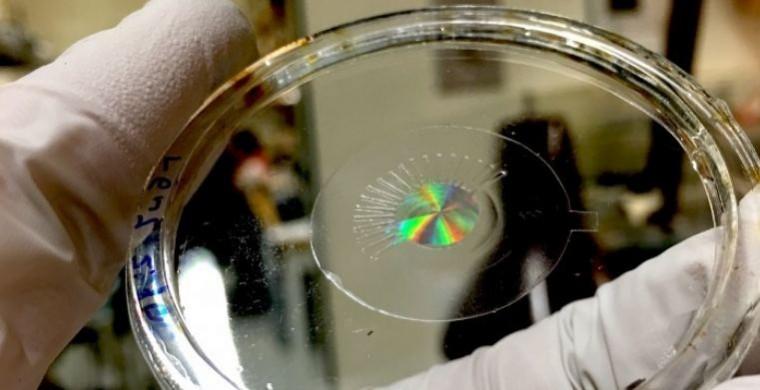
Scientists at the Harvard John A Paulson School of Engineering and Applied Sciences (SEAS) have developed an artificial eye using adaptive metalens and faux muscles that promise to cure not only blurred vision, but also bring big revolution in camera development and mobile phone photography.
During a recently concluded test, researchers succeeded in creating a tunable metalens in human eye-like form and were able to simultaneously control three of the major contributors to blurry images: focus, astigmatism, and image shift.
"This demonstrates the feasibility of embedded optical zoom and autofocus for a wide range of applications including cell phone cameras, eyeglasses and virtual and augmented reality hardware," said Federico Capasso, Robert L Wallace Professor of Applied Physics, and Vinton Hayes, Senior Research Fellow in Electrical Engineering at SEAS and senior author of the paper.
"It also shows the possibility of future optical microscopes, which operate fully electronically and can correct many aberrations simultaneously," Capasso added.
Harvard Office of Technology Development has taken measures to protect the patent of the breakthrough artificial eye technology, which the scientists claim has commercialization opportunities in the field of consumer electronics.
Prior to the development of the artificial eye, metalens was very small -- about the size of a single piece of glitter. They could only focus light and eliminate spherical aberrations through a dense pattern of nanostructures, each smaller than the wavelength of light.
Despite the nanostructure size, "the density of information in each lens was incredibly high," said Alan She, a graduate student at SEAS and first author of the paper.
"If you go from a 100 micron-sized lens to a centimeter-sized lens, you will have increased the information required to describe the lens by ten thousand. Whenever we tried to scale-up the lens, the file size of the design alone would balloon up to gigabytes or even terabytes," She added.
To resolve the issue, the researchers created a new algorithm to compress the file size to make the metalens compatible with the technology currently used to fabricate integrated circuits.
The next challenge for scientists to create the artificial eye was to develop soft muscle-like material around the metalens, which does not compromise its ability to focus light.
Capasso teamed up with David Clarke, Extended Tarr Family Professor of Materials at SEAS and a pioneer in the field of engineering applications of dielectric elastomer actuators, also known as artificial muscles.
They succeeded in developing a thin elastomer that can be attached to the silicon-based metalens and control the light focus by passing pre-set voltage to stretch it and return to regular size upon turning the current off.
With this, they were able to create a polymer to house both the lens and artificial muscle in place. It measures just 30 microns thickness. They successfully conducted tests such as simultaneous focus, control aberrations caused by astigmatisms, as well as image shift.
After a lot of effort, researchers have been able to demonstrate design and fabrication of metalenses up to centimeters or more in diameter.
This breakthrough technology has huge commercial potential in lens-making, eyeglasses and Virtual Reality (VR) and Augmented Reality (AR) head gear for gaming and lucrative high-end smartphone business. With each passing year since 2011, mobile-makers have been making progress in developing feature-rich cameras, but have never been able to match DSLR cameras, particularly in terms of low-light imaging.
But if a cheaper artificial eye-like device can be developed for a phone, it will not only disrupt the industry but also one day makes viewfinder snappers obsolete.
They may also improve the face-unlock feature we see in high-end phones today.
Besides that, the artificial eye has several other use cases in the development of high-end telescopes and microscope.
But, the commercial version is not coming anytime soon, as scientists are still trying to find a workaround to decrease the voltage required to control the stretching of the artificial muscles.
Without this, the metalenses cannot be incorporated in the smartphones, as they come with a small battery that runs for a full day, and that too under mixed usage.
In the meantime, the scientists are also are working to understand if there are more use-cases for the artificial eye.
Stay tuned. Follow us @IBTimesIN_Tech on Twitter for latest updates on technology.








